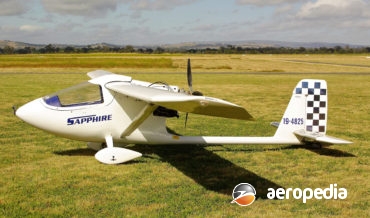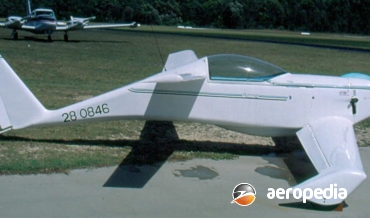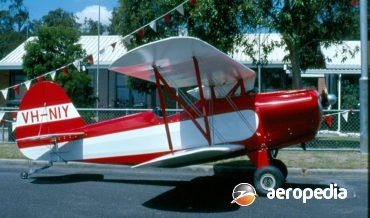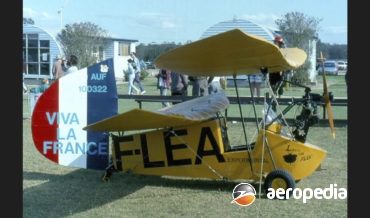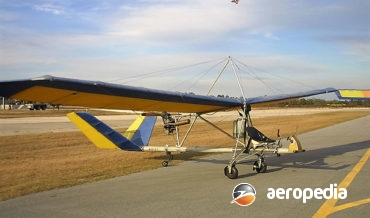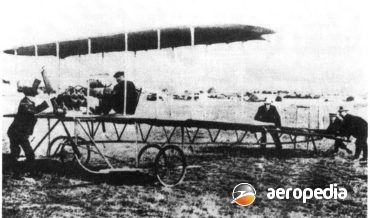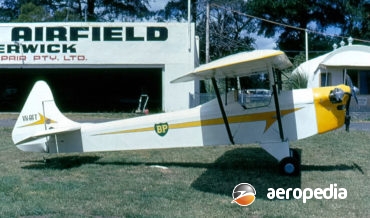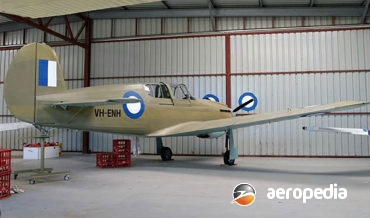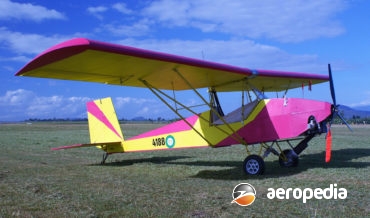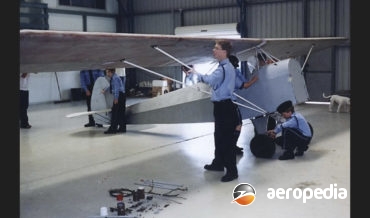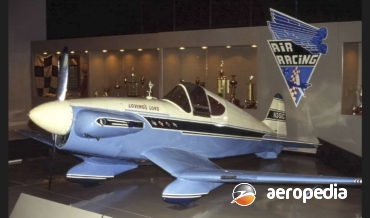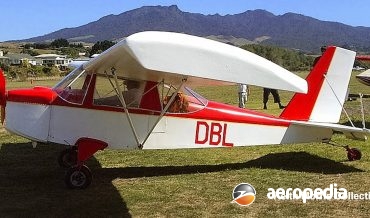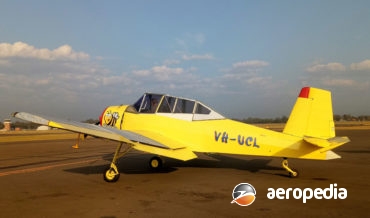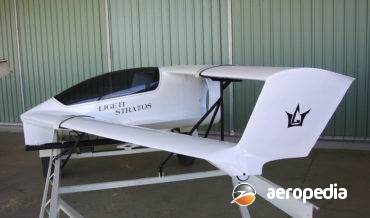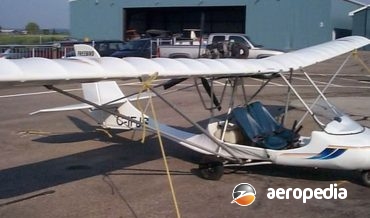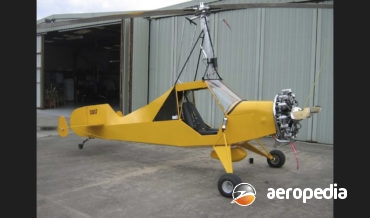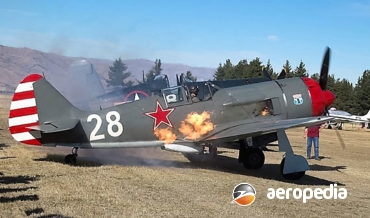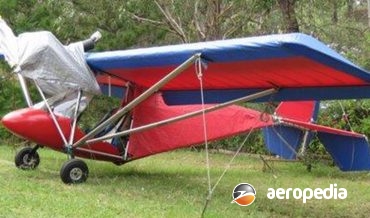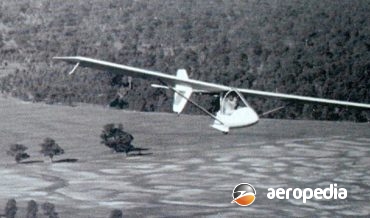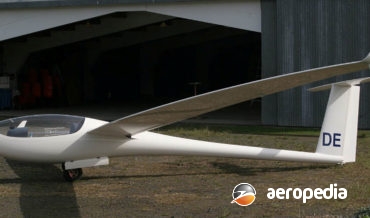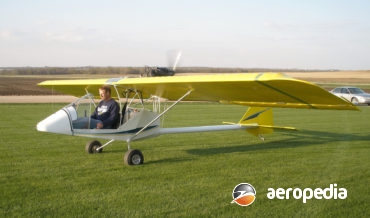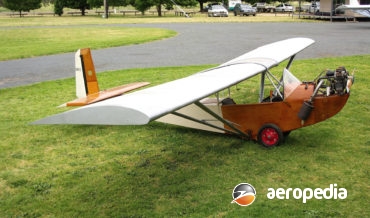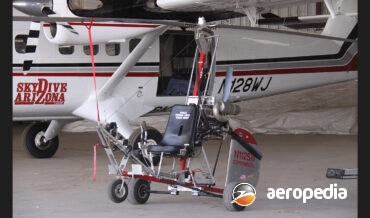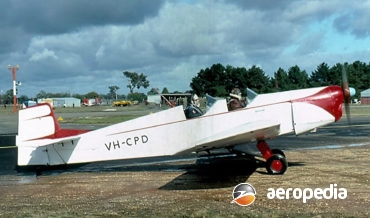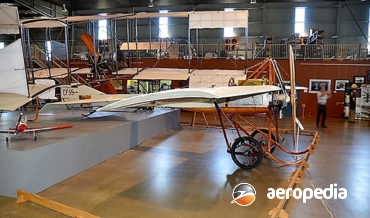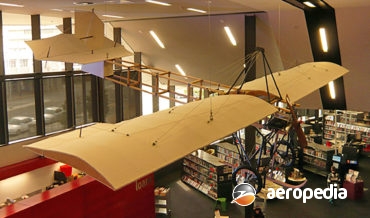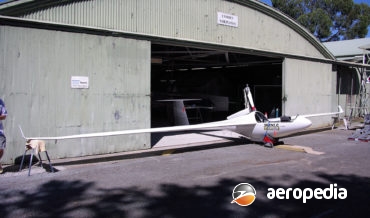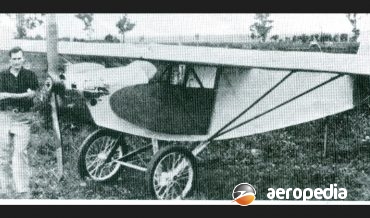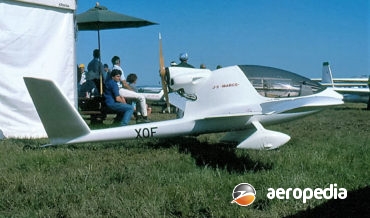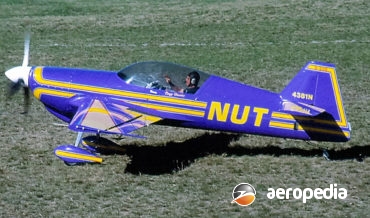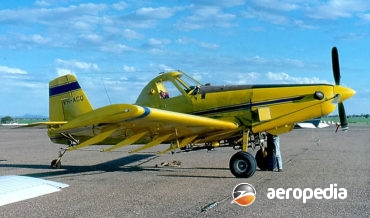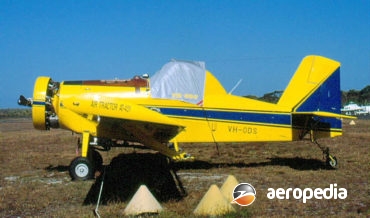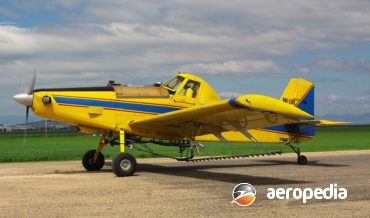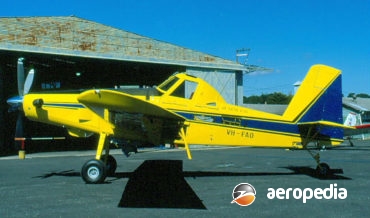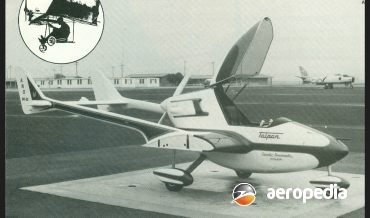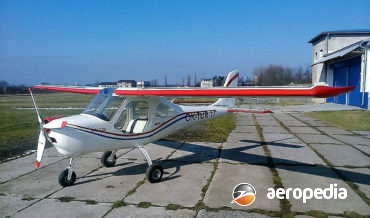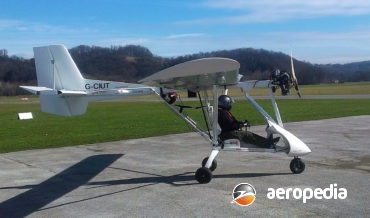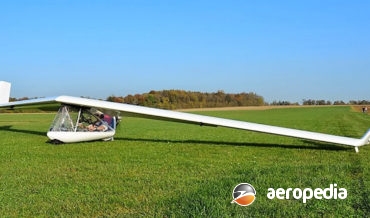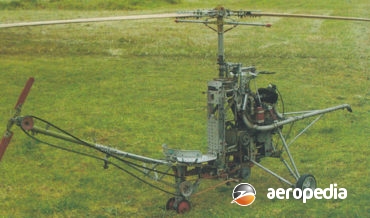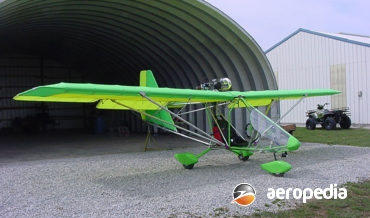All Contents
Contents
The Sapphire was originally designed and built in Australia by Scott Winton to CAO.19.
David C. Eyre
- May 8, 2019
In 1975 Gene Sheehan and Tom Jewett began looking for a small, reliable engine with low fuel consumption to power a small, efficient, sporting aircraft
David C. Eyre
- May 8, 2019
The Baby Lakes was a scaled-down version of the very popular Great Lakes Sports Trainer designed by Barney Oldfield in Cleveland, Ohio, for the amateur builder.
David C. Eyre
- May 8, 2019
The Pou Du Ciel, or Sky Louse, also known as the Flying Flea, was designed by French inventor, M Mignet, in 1933 as a light, cheap, easy-to-build-and-fly aircraft for amateur constructors.
David C. Eyre
- May 8, 2019
The first commercial ultralight aircraft was the Scout designed by Ron Wheeler in Sydney and tested in 1972 and at that time put into series production.
David C. Eyre
- May 8, 2019
In 1909 the Australian Government offered a prize of £10,000 ($20,000) for an Australian made aeroplane which would be suitable for what was then considered to be military purposes.
David C. Eyre
- May 8, 2019
The Luton LA-4 Minor single-seat, ultra-light aircraft was designed by Luton Aircraft in the United Kingdom in 1936. The prototype was flown in that year fitted with a 26-kw (35-hp) Anzani engine. Subsequently it was modified to make the design more suitable for amateur construction, and a number were built
David C. Eyre
- May 8, 2019
The Loehle Aircraft Corp is based in Wartrace, Tennessee in the United States and has in recent years produced a series of ¾-scale replicas of World War I and II fighters in kit form, the latter included the P-40 Kittyhawk, the Supermarine Spitfire, and the North American Mustang. The
David C. Eyre
- May 8, 2019
The Sport Parasol is a single-seat light, simple, wooden aircraft with fabric covering produced by Loehle Aircraft Corp of Wartrace, Tennessee to meet a market for a cheap, light, easy to build ultralight. Wings are detachable for storage and trailering.
David C. Eyre
- May 8, 2019
The Longster was a single-seat light parasol-wing aircraft designed for amateur constructors in the late 1920s by the Long Brothers who operated a radio factory in Cornelius, Oregon. Their first design left much to be desired and they abandoned that and built the Anzani Longster in 1930, this being a
David C. Eyre
- May 8, 2019
The WR-1 Love was a single-seat high performance gull-wing monoplane designed in the 1950s by Neal Loving and built by Wayne Aircraft Co of Detroit, Michigan. It flew for the first time on 7 August 1950 and qualified as a ‘midget racer’ under NAA rules on 18 August 1951. Sets
David C. Eyre
- May 8, 2019
Two examples of this ultralight aircraft have been completed in New Zealand and commenced life as kits for the Team HiMax but were extensively modified during construction.
David C. Eyre
- May 8, 2019
The Z-37 Cmelak (Bumble Bea) was designed and built by LET Narodni Podnik, the LET National Corporation which evolved from a branch of the Skoda series of companies.
David C. Eyre
- May 8, 2019
Charles Ligeti in 1982 built a hang-glider for the Australian Bird Man Rally and then went on to design the Statos, the prototype flying on 25 April 1985 for 45 minutes.
David C. Eyre
- May 8, 2019
The Classic is one of a series of ultra-light aircraft produced by Free Bird Innovations Inc of Detroit Lakes, Minnesota.
David C. Eyre
- May 8, 2019
Little Wing Autogyros of Mayflower, Arizona, has for some years now produced a series of light single-seat fully enclosed tractor autogyros.
David C. Eyre
- May 8, 2019
One of the important design bureaus in the Soviet Union during World War II was that headed by Semyon Alexse’evich Lavochkin.
David C. Eyre
- May 8, 2019
The Lea Kestrel was designed by Cecil Lea under the provisions of ANO 95.10 and was built in prototype form following the granting of a Technical Data Package.
David C. Eyre
- May 8, 2019
The Hitchhiker was designed, built and marketed by Robert Labahan of Seville, VIC in the mid 1980s as a single-seat, open-cockpit ultra-light suitable for cross-country and short field operations.
David C. Eyre
- May 8, 2019
The Antares is a single-seat self-launched glider, produced in Zweilbrucken, Germany, by Lange Aviation GmbH which utilises an engine in the rear fuselage and is produced in a number of models.
David C. Eyre
- May 8, 2019
The Firestar was produced by Kolb Aircraft in the United States in the 1980s as a single-seat ultra-light and had features of early models produced by the company but had the benefit of some years of development.
David C. Eyre
- May 8, 2019
The Kostevc parasol aircraft was designed and built by Joseph Kostevc of Goonelaba, a small town near Lismore, NSW.
David C. Eyre
- May 8, 2019
Ken Brock Manufacturing Inc of Stanton, California since 1957 has been building a series of single-seat open frame gyroplanes, models including the KB-2 and KB-3. Similar in appearance to the Bensen series, which first became available in 1953, a number of refinements were made to that design including a modified
David C. Eyre
- May 8, 2019
The Druine D-5 Turbi was designed by the late Roger Druine in France as a two-seat development of the very successful Turbulent single-seat, light aircraft.
David C. Eyre
- May 8, 2019
Armand Deperdussin, who founded the Societe pour les Appareils Deperdussin in 1910, obtained the services of Mr Berchereau as chief designer to develop a series of aircraft.
David C. Eyre
- May 8, 2019
The Albury monoplane was a light aircraft designed and built in Albury, NSW by Messrs Azor D Robbins and Alex W Porter, two young men aged 21.
David C. Eyre
- May 8, 2019
The Silent 2 is one of a series of single-seat sailplanes produced in Italy to meet FAI type DU-Class regulations. It is produced by Alisport as a ready-to-fly or kit-built glider and is available as a self-launched glider, being fitted with a two-stroke engine driving a single-blade propeller via a
David C. Eyre
- May 8, 2019
The Allison Aircraft Company of 4th and Perry Streets, Lawrance in Kansas was formed in 1920 and its main business was supplying aircraft parts and specialising in rebuilding Hi-lift wings for Curtiss JN-4 Jenny’s. It also built a number of light aircraft.
David C. Eyre
- May 8, 2019
The Alpha Marco J-5, sometimes described as a self-launched glider, was flown for the first time in Poland on 30 October 1983, being designed by Jaroslaw Janowski, and built by a branch of the Marko-Electronic Company in Lodz, Poland, a factory being set up to build the kits.
David C. Eyre
- May 8, 2019
The G-200 is primarily a carbon fibre reinforced composite aerobatic monoplane produced in kit form in two main variants by Akrotech Aviation of Scappoo, Oregon, the G-200 single-seat and the G-202 two-seat.
David C. Eyre
- May 8, 2019
By 1981 the advantages of turbine-powered aircraft in the agricultural field were being realised throughout the world. Companies producing large agricultural aircraft considered ways of fitting their designs with turbine power plants to take advantage of more economical operation.
David C. Eyre
- May 8, 2019
The AT-401 series was a development of the piston-engined AT-301 series and was the smallest of the series.
David C. Eyre
- May 8, 2019
On the drawing-board at Air Tractor at the same time as the 400 series was a new aircraft, which became known as the AT-503. The prototype (N7309X) first flew in April 1986 and had a wingspan of 14.6 m (48 ft), a 821-kw (1,100-shp) Pratt & Whitney PT6A-45R turboprop and
David C. Eyre
- May 8, 2019
Another variation on the Air Tractor theme, the AT-602 was a single-seat low-wing agricultural aircraft, basically described as a 502A with a larger hopper, the prototype (N6084K – c/n 602-0337) flying for the first time on 1 December 1995, certification being completed in June the following year.
David C. Eyre
- May 8, 2019
The Taipan was an ultralight single-seat high performance machine designed and built in the 1980s by Aerotec of Toowoomba, QLD, powered by a 37-kw (50-hp) Fuji 440 engine (440-cc) which was a conversion of a Snowmobile engine for aviation use.
David C. Eyre
- May 8, 2019
The Merlin series of light aircraft was designed in the Czech Republic and is produced by Aeromarine LSA at South Lakeland Airport in Florida, US and was introduced to the aviation fraternity at the Sport Aviation Expo in Florida in early 2016.
David C. Eyre
- May 8, 2019
The Solo is one of a series of aircraft developed in Bulgaria by Aeroplanes Dar, the Company having been established in 1917 by the King of Bulgaria, King Ferdinand, as a workshop for what was to become the Country’s National Air Force.
David C. Eyre
- May 8, 2019
The Swift started lift as a lightweight foot-launched tailless glider with rigid wings and was designed in California in the United States but has been manufactured by Aeriane, a Company based at Gembloux in Belgium and was initially built under licence but later the Belgian concern became the sole manufacturer.
David C. Eyre
- May 8, 2019
This light single-seat helicopter was built in the Melbourne suburb of Black Rock and is believed to have been completed in about 1948. It took about two-years to complete and is thought to be, if not the first, one of the first helicopters designed and built in Australia.
David C. Eyre
- May 8, 2019
The Aerolite light aircraft series was constructed and marketed in the early 1990s by Australian Aviation Works of Donvale, VIC, the prototype being placed on display at the Australian International Airshow at Avalon.
David C. Eyre
- May 8, 2019
Recent Comments
Archives
Categories
- No categories
Categories
- No categories
Latest Posts
Newsletter

